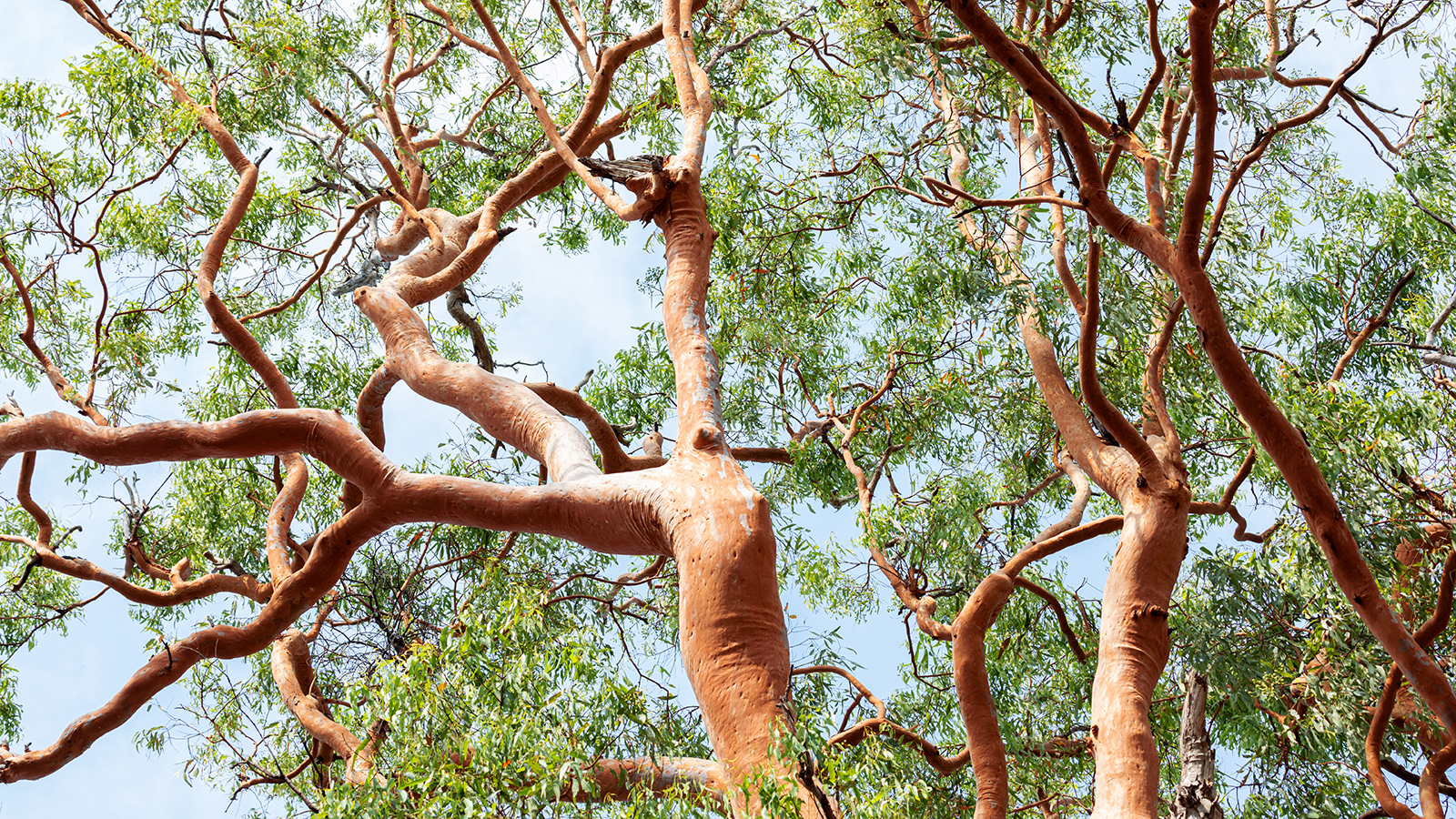
While towering trees with expansive branches have their appeal in spacious gardens, choosing the wrong trees for a small backyard will overwhelm a limited space and cause more harm than good.
When selecting the best trees for small yards, it's just as important to understand which trees you should avoid to create a beautiful and manageable space. Factors like root invasiveness, growth rate, and ease of maintenance are all important, and while large varieties are visually striking, they can damage property and present a number of challenges.
Below, we examine some of the pitfalls of popular varieties and learn what alternatives can bring you closer to perfecting your small backyard ideas.
Trees to avoid planting in a small backyard
From littering yards with their messy fruit to overshadowing neighboring plants, each of these 7 tree varieties can quickly transform a dream backyard into a nightmare space.
1. Ginkgo

USDA hardiness zone: 4-8
Height: 50-80 feet
Botanical name: Ginkgo biloba
Ginkgo trees, with their vibrant fan-shaped leaves and prehistoric lineage, are popular for good reason. However, their allure can quickly turn problematic when space is limited.
These ancient trees can grow to impressive heights of 50-80 feet with a spread of 30-40 feet, making them far too large for confined spaces. Their sprawling branches will quickly overshadow a tiny yard, crowding out other plants and creating an overwhelming presence.
'Another major issue is the female Ginkgo tree's fruit, which emits a strong, unpleasant odor as it falls and decays. This can be a significant nuisance if the tree is near a patio or outdoor kitchen,' explains Michael Musinski, Certified Arborist and Horticultural Educator for Monster Tree Service. 'Ginkgos also shed a lot of leaves in the fall, which can require considerable clean-up effort.'
2. Tree of Heaven
USDA hardiness zone: 4-8
Height: 60-70 feet
Botanical name: Ailanthus altissima
Another variety of tree you should avoid if you have a small backyard is the deceptively named 'Tree of Heaven'. Originally from China, Tree of Heaven is an invasive species known for its rapid growth and ability to thrive in a variety of environments. Despite its impressive height and lush appearance, it can pose several problems for small spaces.
These fast-growing trees cast a lot of shade, and their aggressive roots can damage sidewalks and home foundations.
'This tree is also a high maintenance burden,' says Eric Preston Stout, Master Gardener and Landscaper with TeachMe.To. 'Its invasive nature means it will sprout suckers all over your yard, requiring constant pruning to keep it in check.'
3. Silver Maple
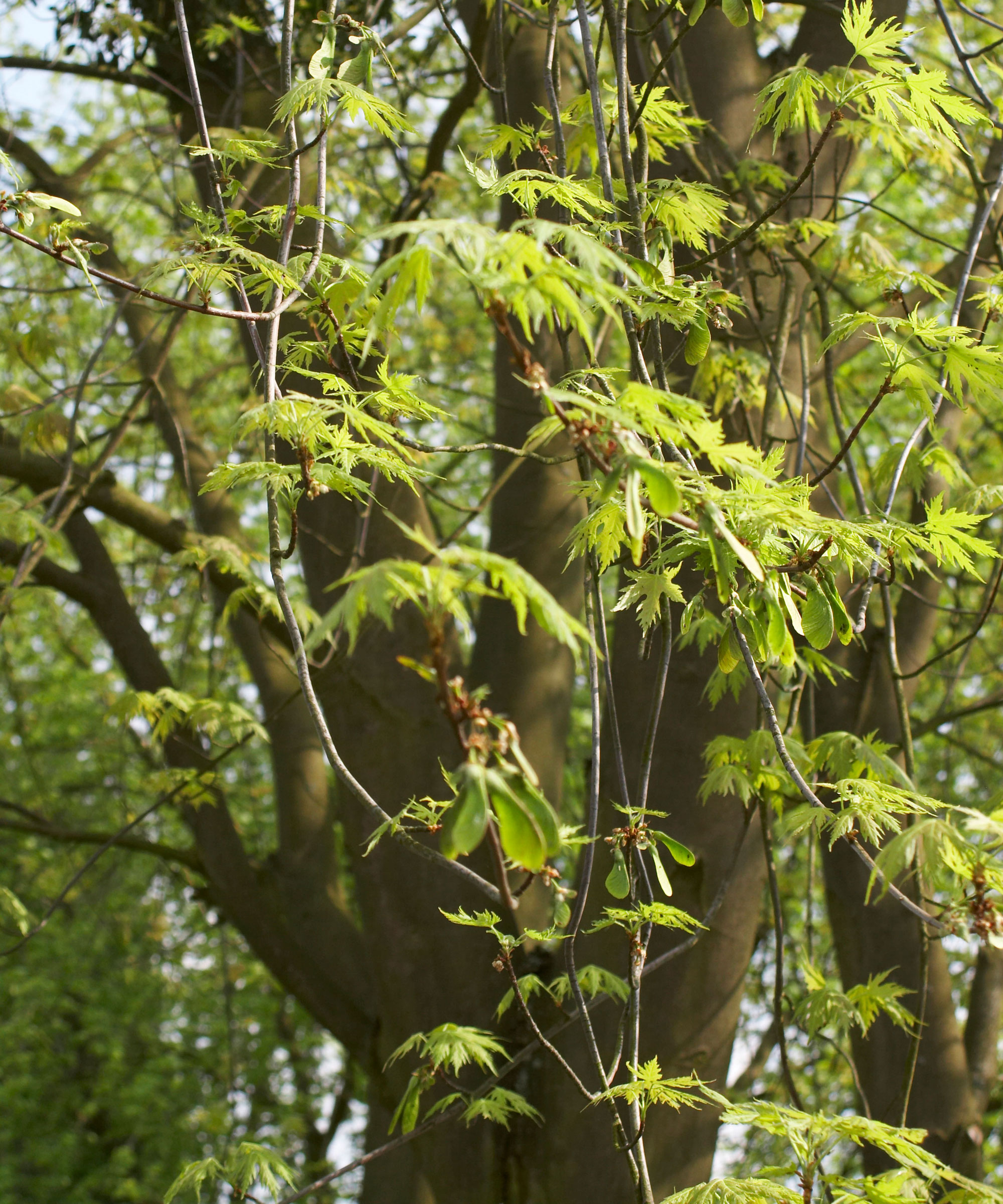
USDA hardiness zone: 3-9
Height: 60 - 80 feet
Botanical name: Acer saccharinum
Silver maples are a sight to behold with their impressive height and dazzling fall leaves, but don't be fooled by their beauty – they are a poor fit for small backyards. These trees can soar up to 80 feet tall, and their aggressive root systems are notorious for causing havoc in confined spaces.
'Unfortunately, these trees have very shallow rooting that is known for breaking hardscapes,' explains Blake Watkins, Board Certified Master Arborist. These shallow roots can creep under decking and foundations, causing significant damage and often requiring expensive repairs.
Silver maples are prolific shedders, producing substantial leaf litter that is hard to manage (and will often find its way into an unsuspecting neighbor's yard, too). Moreover, their dense canopy can cast heavy shade, preventing other plants from thriving and leaving a small backyard feeling dark and overcrowded.
'While their fall colors are undeniably stunning, silver maples can create more trouble than they're worth in a small yard,' says Blake. 'If you love the delicate leaves of a maple but don't have the space, consider Japanese maple instead. They grow slowly to just 20 feet, and smaller cultivars are available that thrive in shady areas.'
You can purchase Japanese maples at Nature Hills. They are the perfect alternative for those who want to enjoy the beauty of a maple tree without the associated headaches.
4. Black Walnut
USDA hardiness zones: 4-9
Height: 50-75 feet
Botanical name: Juglans nigra
Black walnut trees are undeniably beautiful, with their towering height and lush colorful canopies. But sadly these trees are not suitable for small spaces for several reasons.
'The main reason is related to their allelopathic properties,' explains Michael Musinski. 'The black walnut produces juglone, a chemical found in their buds, nut hulls, roots, and leaves, all of which inhibit the growth of many neighboring plants. Sensitive species, particularly those in the potato family, exhibit symptoms such as yellowing, wilting, and stunted growth when exposed to juglone.'
This allelopathic effect makes it challenging to grow a diverse garden or lawn in the vicinity of a black walnut tree because the root system can extend far beyond the canopy, dispersing juglone over a broader area. Even after the tree is removed, juglone persists in the soil, affecting plant growth for several years.
Black walnut trees also require significant maintenance. These trees can grow up to 75 feet tall and their large size and extensive branching mean that regular pruning is necessary to keep the tree healthy. They also produce large, hard nuts that can create a substantial mess when they fall onto a lawn or decking. These nuts can also pose a tripping hazard and damage lawn equipment if not promptly removed.
5. Plum trees
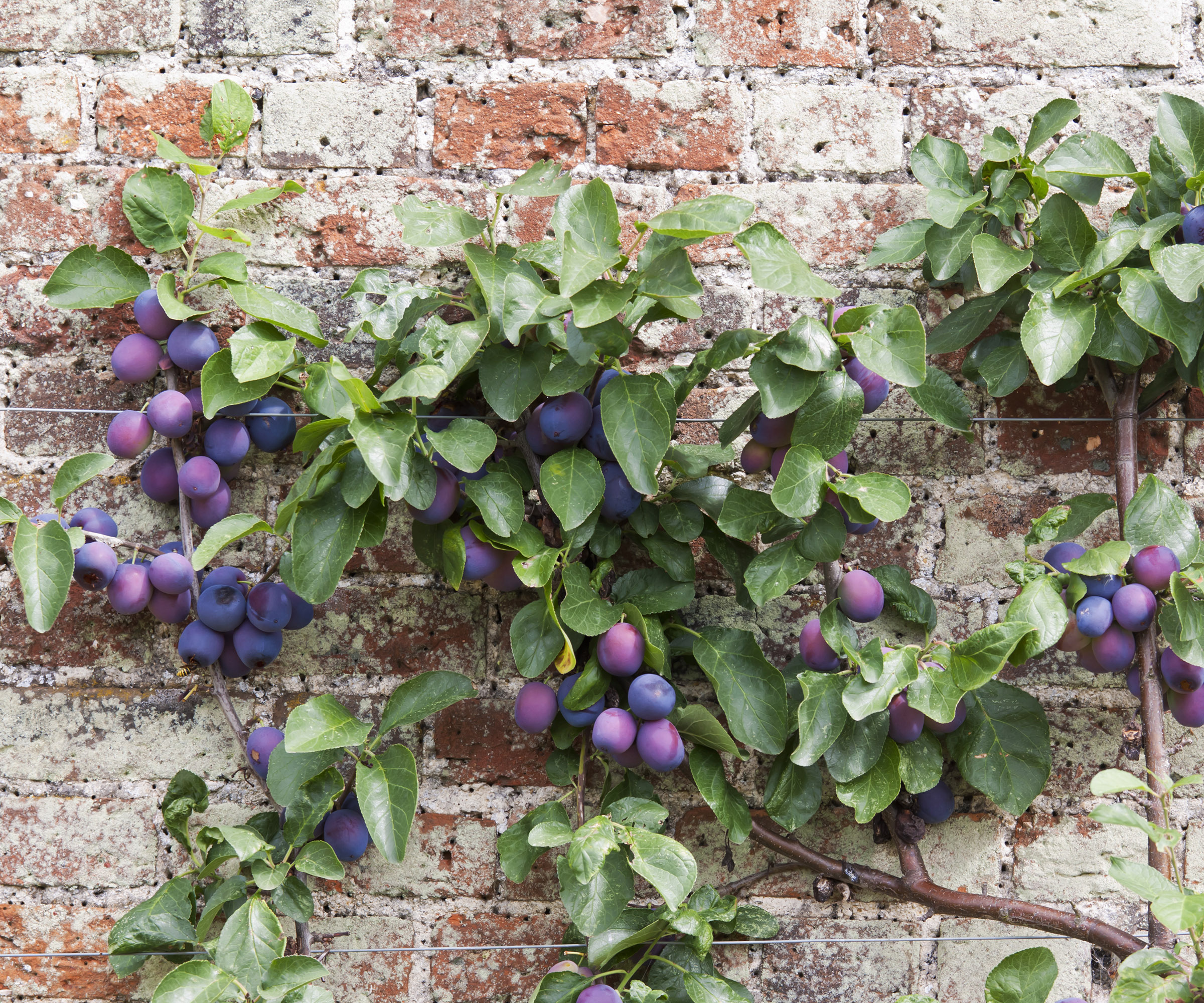
USDA hardiness zones: 4-9
Height: Up to 25 feet
Botanical Name: Prunus domestica
'Plum trees of all varieties are delicious, easy fruit trees for a backyard orchard, but many people don't know just how fast they can grow,' says Blake Watkins. 'They are much faster growing than other stone fruits and can quickly overwhelm a small space.'
As plum trees grow swiftly, they often produce fruit out of reach, which then falls and creates a mess. The excessive fruit can attract pests and require constant cleanup to maintain a tidy yard. Furthermore, plum trees can become so laden with fruit that their branches may break under the weight, which requires gardeners to be much more vigilant with their shears. This level of upkeep can be impractical for those with limited space and time.
As an alternative, consider planting the best fruit trees for small yards, such as apple, pear, or apricot trees. These alternatives grow more slowly and are easier to maintain, providing delicious fruit without overwhelming a yard.
6. Eucalyptus
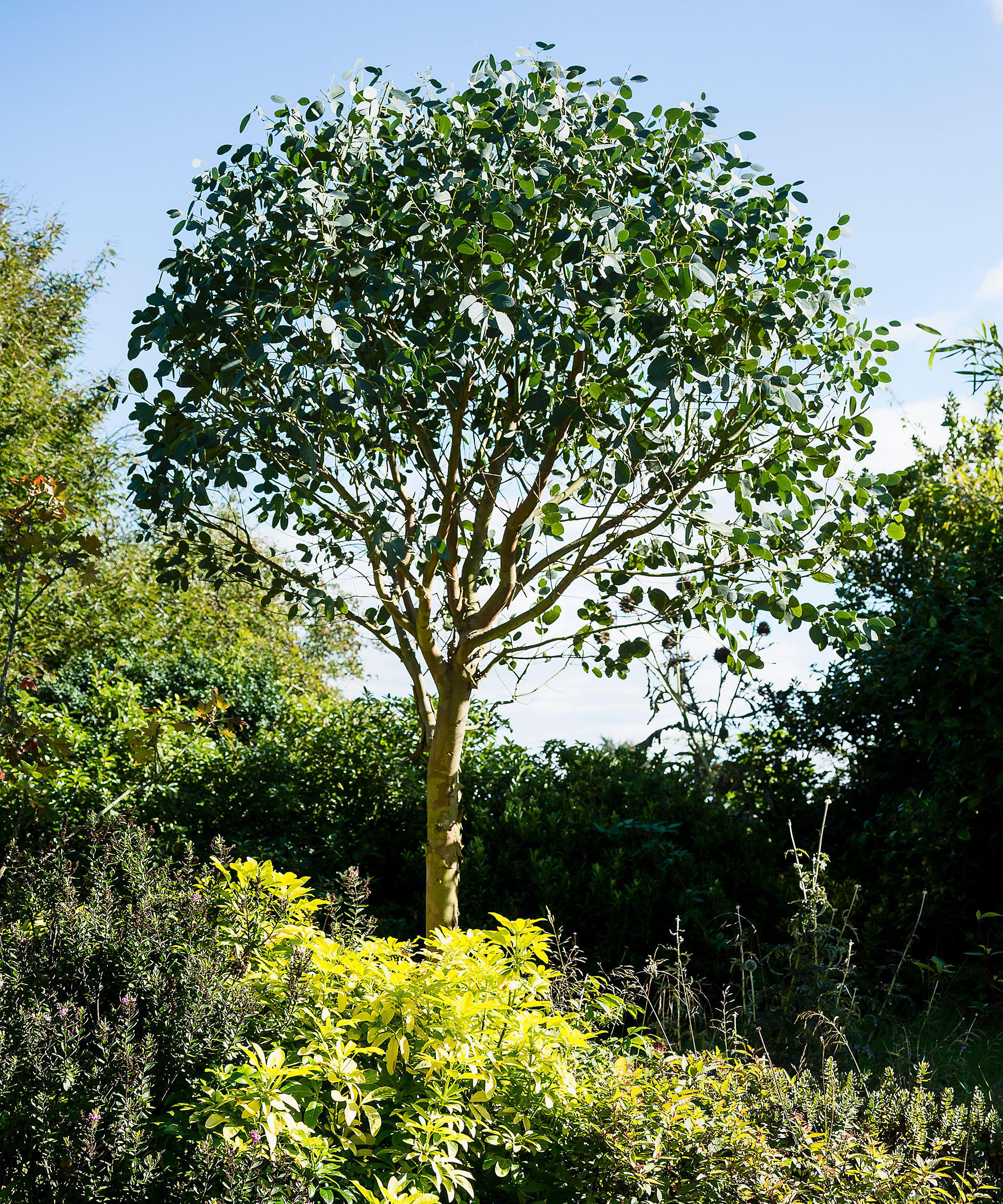
USDA hardiness zones: 8-10
Height: 50-100 feet
Botanical name: Eucalyptus
Eucalyptus trees are a popular choice thanks to their aromatic leaves and striking presence, but they are not a great fit for small backyards. These trees can grow up to 100 feet tall, quickly overshadowing a small space and blocking sunlight.
Eucalyptus trees also shed their bark throughout the summer months, which isn't much of an issue in larger spaces but can quickly make a mess in small gardens. The oil-rich leaves and bark are also highly flammable, posing a fire risk, especially in dry climates.
For a small backyard, consider more suitable alternatives, such as dwarf varieties of eucalyptus and keep them well pruned, or other compact ornamental trees that can offer a similar aesthetic in a more manageable size.
7. Spreading Bamboo
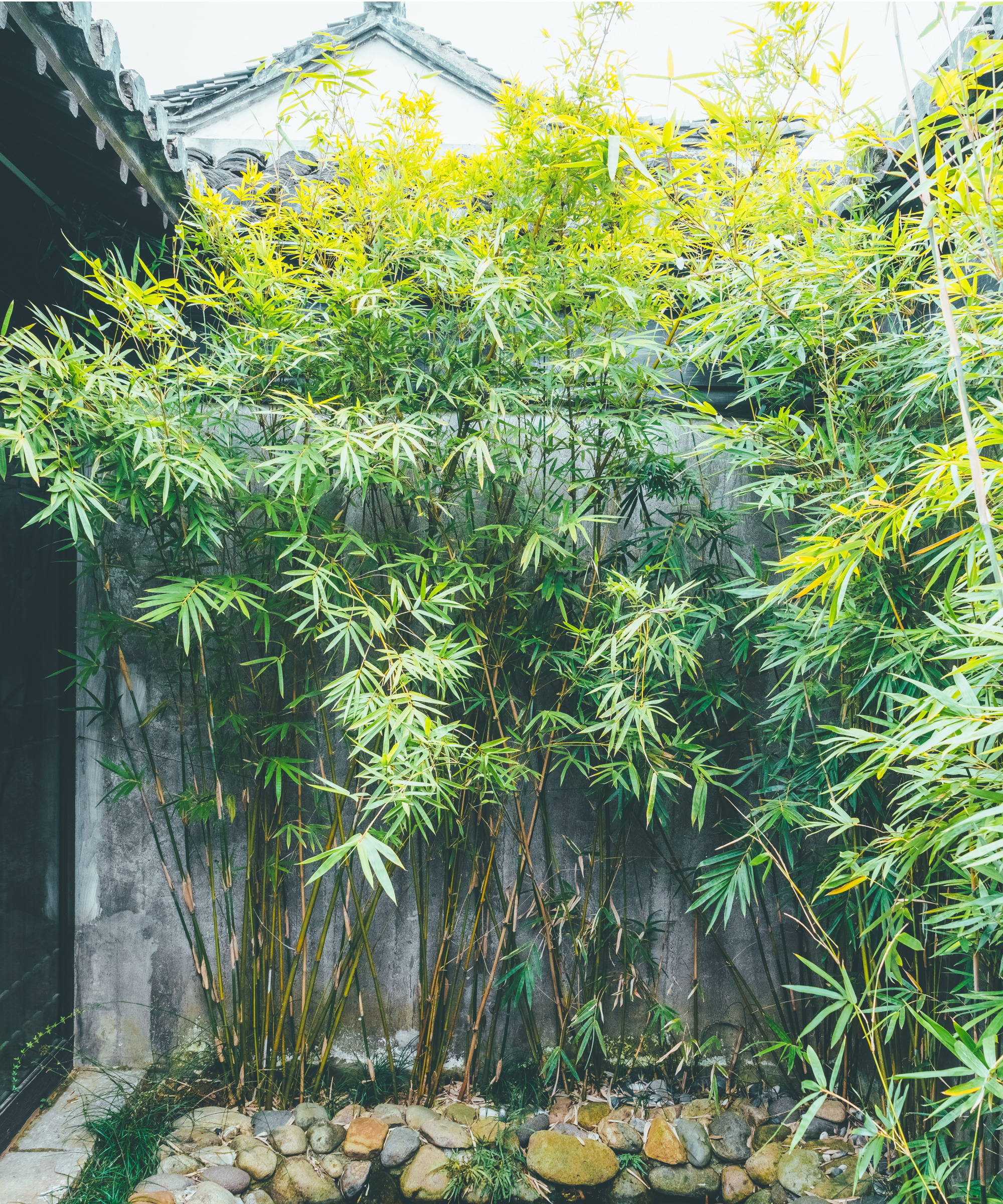
USDA hardiness zones: 5-10
Height: Up to 40 feet
Botanical Name: Bambuseae
As one of the best trees for privacy and screening a backyard, bamboo might seem like an obvious addition to a garden, but it can quickly become a nightmare in small spaces. Its aggressive root system has a knack for wreaking havoc on patios, foundations, and underground utilities and maintaining bamboo is a labor-intensive task due to its constant pruning needs.
Established bamboo can reach heights of up to 40 feet, overshadowing yards and potentially blocking sunlight. Moreover, its dense canopy can quickly create a dark, overcrowded space, obstructing pathways and leaving little room for other landscaping elements.
Instead of opting for spreading bamboo, consider clumping varieties or alternative plants like the best ornamental grasses for privacy. These options provide greenery and privacy without the invasive nature of spreading bamboo.
Many of these trees also feature among the worst trees to plant near a pool, due to their invasive roots and capacity to shed. But don't be discouraged from pursuing your garden designs – we've also compiled a list of the best trees to plant close to a house if you're looking to bring tree species into your small backyard ideas.







